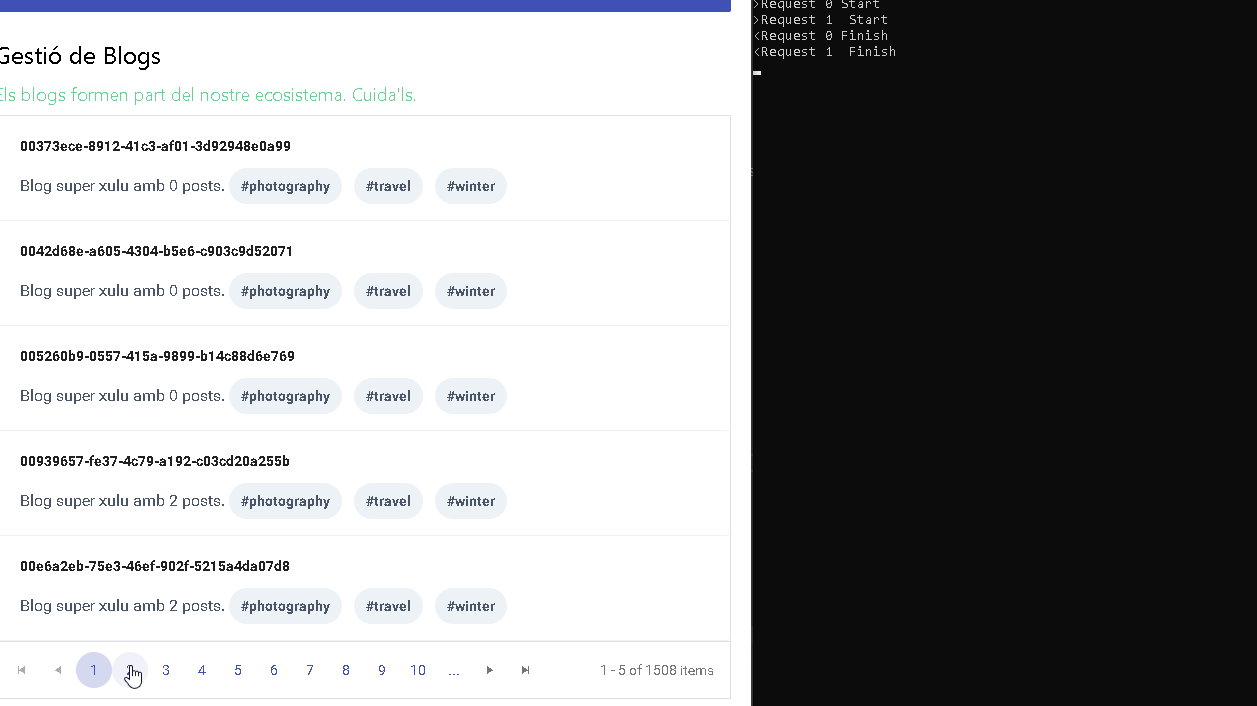Edited Aug 2020
Official guidance: https://docs.microsoft.com/ca-es/aspnet/core/blazor/blazor-server-ef-core?view=aspnetcore-3.1 with several solutions. In my opinion, the best approach on post is "Create new DbContext instances":
The recommended solution to create a new DbContext with dependencies is to use a factory.
//The factory
using System;
using Microsoft.EntityFrameworkCore;
using Microsoft.Extensions.DependencyInjection;
namespace BlazorServerDbContextExample.Data
{
public class DbContextFactory<TContext>
: IDbContextFactory<TContext> where TContext : DbContext
{
private readonly IServiceProvider provider;
public DbContextFactory(IServiceProvider provider)
{
this.provider = provider;
}
public TContext CreateDbContext()
{
if (provider == null)
{
throw new InvalidOperationException(
$"You must configure an instance of IServiceProvider");
}
return ActivatorUtilities.CreateInstance<TContext>(provider);
}
}
}
Injecting the factory:
services.AddDbContextFactory<ContactContext>(opt =>
opt.UseSqlite($"Data Source={nameof(ContactContext.ContactsDb)}.db")
.EnableSensitiveDataLogging());
Using the factory:
private async Task DeleteContactAsync()
{
using var context = DbFactory.CreateDbContext();
Filters.Loading = true;
var contact = await context.Contacts.FirstAsync(
c => c.Id == Wrapper.DeleteRequestId);
if (contact != null)
{
context.Contacts.Remove(contact);
await context.SaveChangesAsync();
}
Filters.Loading = false;
await ReloadAsync();
}
My deprecated answer:
You can try to create a new scope for each request:
public class MyViewModel : INotifyPropertyChanged
{
protected readonly IServiceScopeFactory _ServiceScopeFactory;
public MyViewModel(IServiceScopeFactory serviceScopeFactory)
{
_ServiceScopeFactory = serviceScopeFactory;
}
public async Task<IEnumerable<Dto>> GetList(string s)
{
using (var scope = _ServiceScopeFactory.CreateScope())
{
var referenceContext = scope.ServiceProvider.GetService<MyContext>();
return await _myContext.Table1.where(....)....ToListAsync();
}
}
In the following screenshot you can see a sample case of this issue. User clicks quickly in several pagination elements. A new request starts before previous one is ended.

Here Daniel Roth (Blazor Product Manager) talking about Using Entity Framework Core with Blazor
与恶龙缠斗过久,自身亦成为恶龙;凝视深渊过久,深渊将回以凝视…
